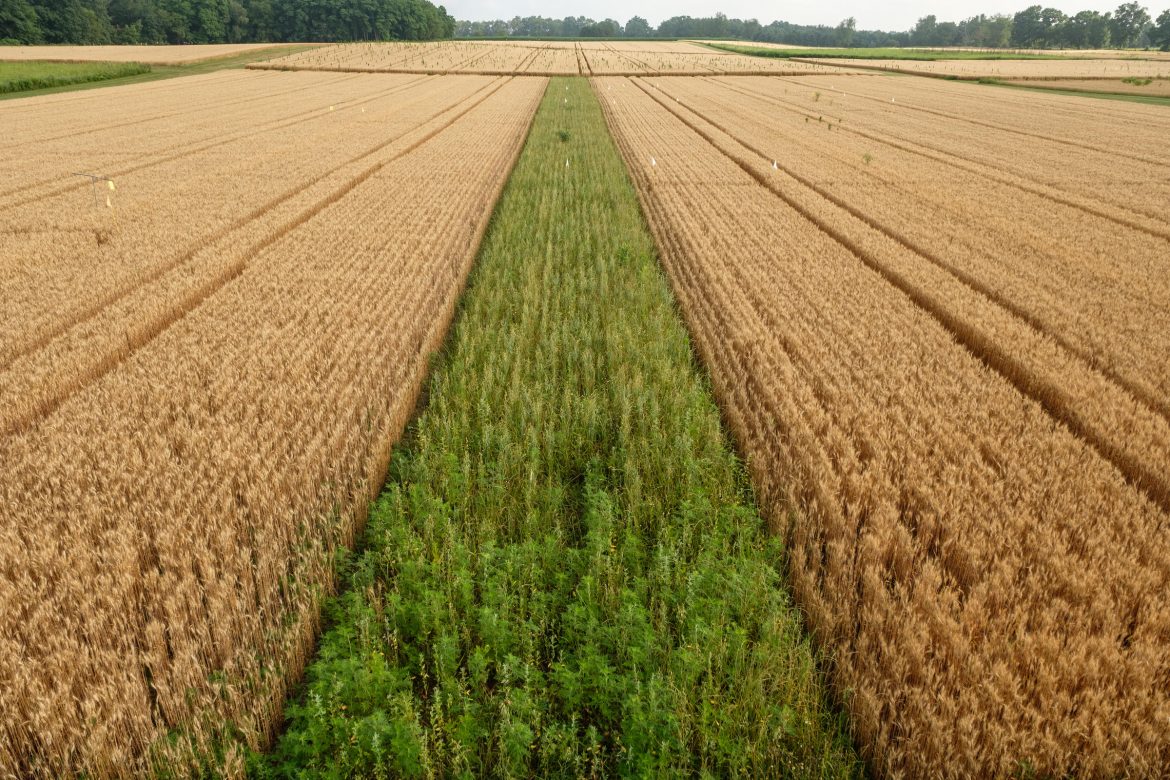
One of the fields the researchers used in the no-till farming study at Michigan State University’s Kellogg Biological Station. Image: Kurt Stepnitz
By Taylor Haelterman
Results from a nearly 30-year ongoing study published by researchers at Michigan State University’s Kellogg Biological Station show that over the long-term, no-till agriculture produces improved crop yields.
Listen to this story
Tillage is the process of breaking up the soil to prepare it for the upcoming grow season. The study focuses on continuous no-till agriculture. This means the fields are never tilled, as opposed to some no-till fields which till every other year, said Nick Haddad, one of the researchers involved in the study.
“No-till agriculture is keeping the soil intact between harvesting and planting,” said Haddad. “If you imagine the soil it has organic matter, it has animals living in it and microbes, all that. That whole healthy soil and biological material stays together.”
The study shows two key results, over time practicing no-till agriculture improves crop yield and has positive environmental impacts by creating higher quality soil and reducing the amount of carbon released into the atmosphere.
“When we look over time, initially, when the land is converted to no-till there’s no difference in yield,” Haddad said. “Yet over time every year the crop yield in no-till treatments becomes higher and higher relative to conventional agriculture. The crazy thing about our study is that over a thirty year time period we don’t see that trend leveling off.”
This increased crop yield economically benefits farmers. Long-term benefits can amass to thousands of dollars per acre, and the value keeps accruing, Haddad said.
The increased performance of no-till fields comes from keeping the soil intact.
“It keeps higher organic matter in the soil, and it retains higher amounts of moisture,” the researcher said. “So that intact soil, and healthy soil, provides better conditions for agricultural crops to perform well year after year.”
Haddad said these consistent benefits were only found by looking at a longer time frame than the three to five years of a typical study. Because of variations in the environment they needed to look at the work for more than a decade to see results consistent with the 30-year trend.
He believes the results found are applicable for about 30-50% of the upper Midwestern corn belt.
Lee Thelen farms corn, soybeans, wheat and oats in Clinton County. He began converting to no-till practices through the late 1980s and early 1990s for cost efficiency.
Thelen keeps up the practice to this day citing its efficiency, along with increased soil quality and reduced carbon emissions.
“We have the same yield as our neighbors do,” Thelen said. “But we have lower cost for our yield. Now it’s all about efficiency on the financial side of it. We farm almost 2,000 acres and I’m one guy. I do it all.”
For some farmers, the decision to till their fields depends on the type of soil and farming practices.
At Fisher Traditional Farms in Breckenridge, no-till agriculture wouldn’t be successful, said Gary Fisher, the president of the corporation.
It also farms corn, soybeans, and wheat, but its soil is a heavy clay loam which has the tendency to be compact.
“By tilling it, that allows it to break it up, aerate it, and get oxygen in the soil,” Fisher said. “Lighter soils don’t have a tendency to compact that way, so a no-till situation works better in that circumstance in my view.”
At Fisher Farms they till two or three times a year.
For Haddad, the next step in the research is looking into when the increased yield levels of no-till agriculture level off, and to ask more about the changes that come with choosing not to till like new methods of weed control.
This story is brought to you as part of a partnership between WKAR and Michigan State University’s Knight Center for Environmental Journalism.